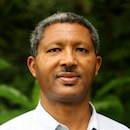Description
In Ethiopia, limited alternative livelihood options compounded by poverty and climate variability and change aggravate forest resources degradation. In 2011, Ethiopia issued the Climate Resilient Green Economy (CRGE) Strategy, which recognizes the role of forestry as one of the four pillars of the carbon-neutral economy to be achieved by 2030. Over the last ten years, efforts have been made to conserve forests and reduce emission from deforestation and forest degradation. REDD+ Investment Program (RIP) II is a three-year program, building on good practices and lessons learned in phase I. The second phase scales the successes of RIP I, and promote innovation and transformational practices to further accelerate action. The following actions are instrumental for delivering results: a) scaling up good practices to maximize conservation gains at landscape level and livelihood gains for communities; b) bringing relevant international practices and lesson learned from forestry research to inform program planning and implementation, and building the capacity of national partners to engage in development-oriented forestry action research to help bridge the forestry-development gap in forestry; c) strengthening value addition and processing of forest products. Building on RIP I, RIP II targets the identification, adoption, and scaling-up of innovations, practices and working mechanisms that accelerate and sustain the conservation of biodiversity rich forests of the country. The program is implemented in 134 woredas located in six regional states where the share of poverty from Ethiopia’s total population is high.






















